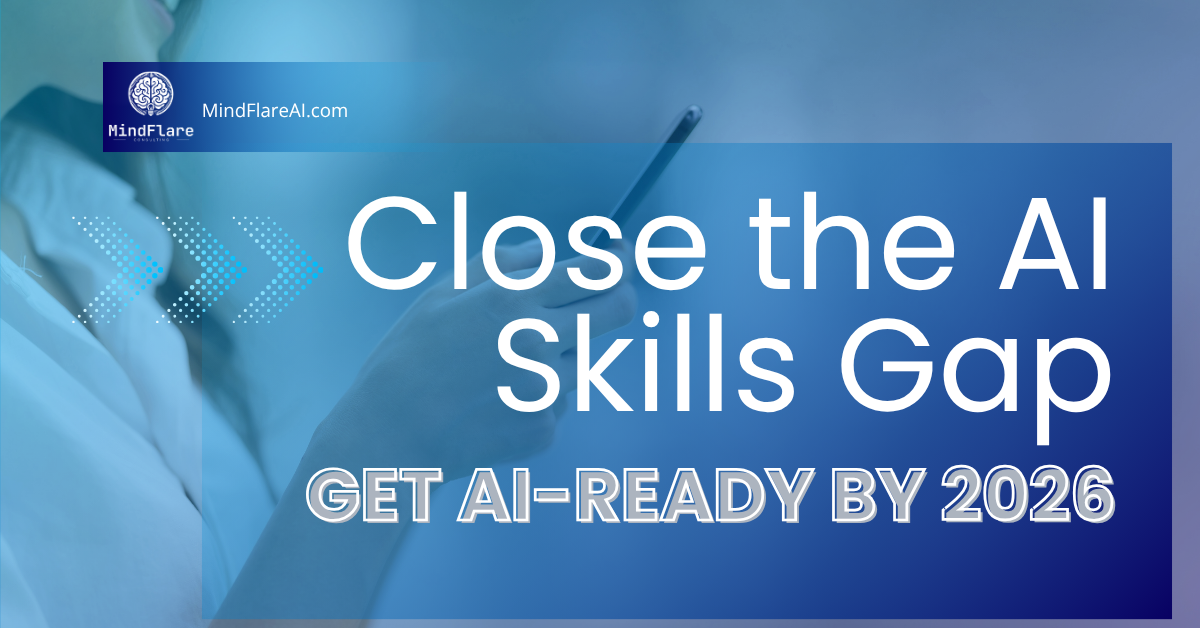MindFlare AI's Workforce Development Model: Closing the AI Skills Gap

Summary
MindFlare AI introduces an innovative workforce development model that addresses the critical AI skills gap by blending immersive learning with ongoing support to prepare employees for AI integration by 2026.
Full Article
What is the main problem MindFlare AI is addressing?
The main problem is the significant AI skills gap where 68% of executives report moderate to extreme skills shortages in their organizations, and only one-third of organizations say employees are adequately trained for AI-related roles despite 94% of CEOs ranking AI skills as their top hiring priority.
Why is the AI skills gap so significant for businesses?
The AI skills gap is significant because companies leveraging AI achieve up to three times higher revenue-per-employee growth than lagging peers, yet the economic impact of the skills gap already exceeds $5 trillion globally, making it a critical barrier to ROI and competitive advantage.
How does MindFlare AI’s approach differ from traditional AI training?
MindFlare AI’s approach combines global AI literacy standards with role-specific application, hands-on workflow design, and real-time AI learning assistants, transforming AI education from theoretical seminars into daily applied skill-building that integrates seamlessly into existing workflows.
What is the Ebbinghaus Forgetting Curve and why does it matter for AI training?
The Ebbinghaus Forgetting Curve is the psychological finding that people forget up to 90% of what they learn within just a few days if it isn’t reinforced or applied, which explains why traditional one-time AI training sessions fail to create lasting capability.
When should organizations implement AI training to be ready for 2026?
Organizations should implement AI training now using their remaining 2025 training budgets to accelerate adoption and build readiness before the new year, ensuring they enter 2026 with trained teams and measurable ROI.
What are the key benefits of MindFlare AI’s workforce development model?
The key benefits include higher AI adoption rates, faster productivity gains, measurable business value, and transforming AI from intimidating to exciting by showing employees exactly how it applies to their specific roles.
Who is most affected by the AI skills gap according to the research?
Both executives and employees are affected - executives face growth limitations due to skills shortages, while employees lack confidence and practical skills, with only 22% knowing how to use prompt engineering effectively despite AI being essential for future growth.
What is the current state of AI training programs in organizations?
Between 60-70% of companies entering 2026 lack formal AI training programs despite record spending on automation and generative tools, highlighting the disconnect between technology investment and workforce development.
How does MindFlare AI’s model address the challenge of AI adoption?
By making training integrated, practical, and continuous through daily immersion within ongoing tasks, allowing employees to experiment and refine how they use AI to work faster, smarter, and more creatively than before.

This story is based on an article that was registered on the blockchain. The original source content used for this article is located at Newsworthy.ai
Article Control ID: 267133